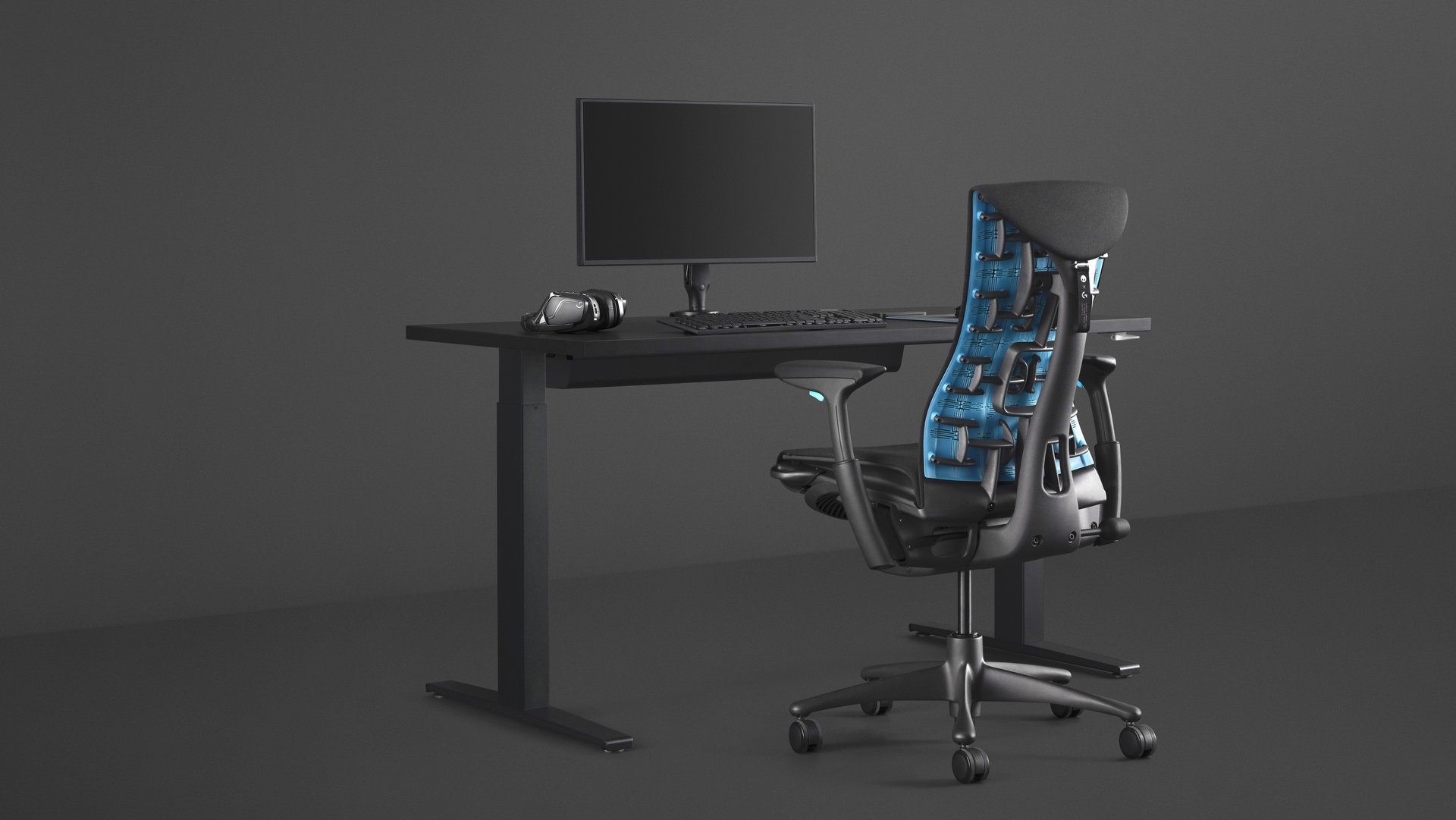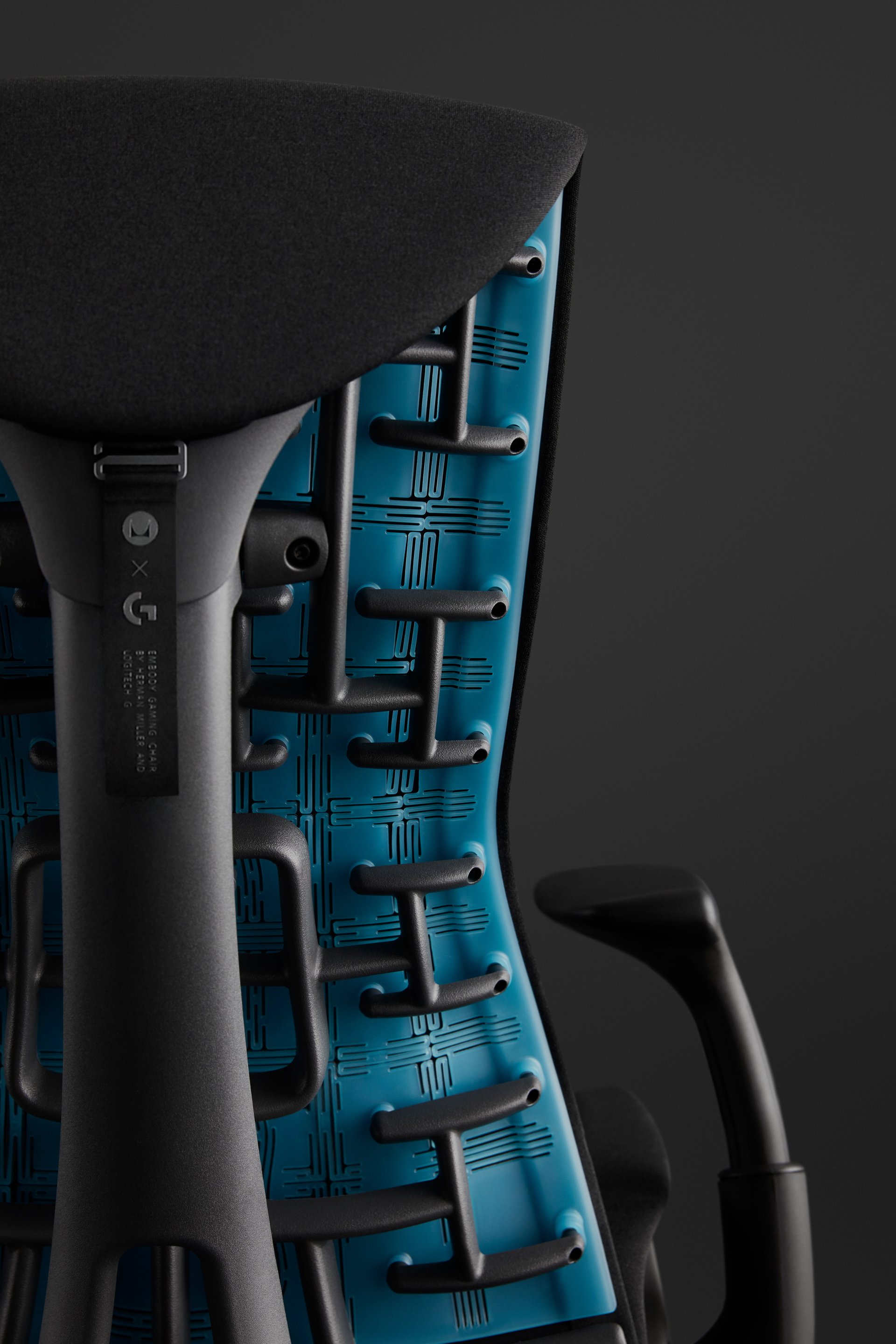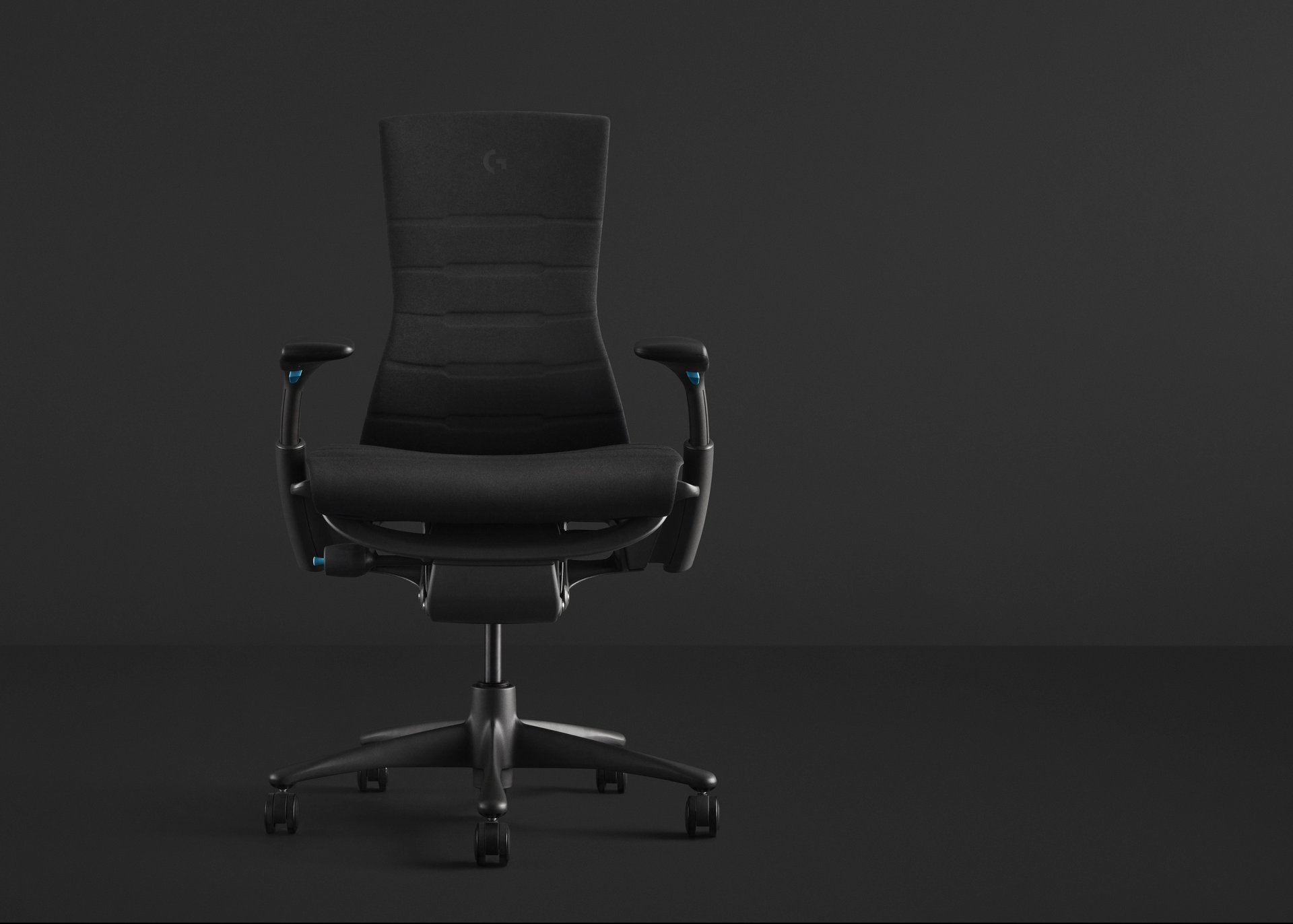Should your next home-office chair be an esports gaming chair?
Quick, think of someone hunched in front of a computer, guzzling caffeine for hours on end. Did you picture a remote worker or a gamer?


Quick, think of someone hunched in front of a computer, guzzling caffeine for hours on end. Did you picture a remote worker or a gamer?
A new chair, developed by Herman Miller and Logitech, promises ergonomic support for both types of activities. The $1,500 Embody Gaming Chair has the bones of an office chair. Its design is adapted from Herman Miller’s 2008 task chair model, which pays close attention to supporting the full length of a sitter’s back, beyond the lumber region. Co-developed with a team of doctors and experts in biomechanics, vision, and physical therapy, Embody is marketed as a chair that aligns your body, improves blood flow, and maximizes your oxygen intake.

A global pandemic seems fortuitous for the release of an ergonomic gaming chair. It capitalizes on two trends: the rise of telecommuting, and the spike in the number of video game players around the world during the long weeks of lockdown. A recent report by the 3D software company Unity indicates a 40% increase in daily gaming on PCs and consoles and a 23% bump on mobile devices over the past few months.
At a time when many people are still working in makeshift at-home offices, the preferred set-up of gamers doesn’t seem like too much of a departure. For instance, like many of us working on a laptop, video game players tend to sit closer to their monitors—about 10 to 12 inches on the average. (Traditional task chairs, in comparison, are designed based on the idea that workers sit about an arm’s length away from their monitors.) The Embody gaming chair has a setting that permits this up-close stance while maintaining a sitter’s healthy back alignment.
“You could see it as a dual purpose chair that fits any space,” explains Jon Campbell, business lead for Herman Miller’s gaming division.
Embody’s simple profile is a stark contrast to the bulky, bombastic, race car driver aesthetic of other gaming chairs in the market. Its design is purposely quiet—that is, if you don’t mind the exposed plastic back detail which looks a bit like a chiropractor’s scale model of a human spine. Campbell tells Quartz that Embody’s design team also wanted to counter the notion that esports is an all-boys club. “It was part of our conversation,” he explained. “This cannot come across as an overly masculine thing.”

Why is the chair black? “People love buying black chairs!” Campbell says, explaining that 60% of task chairs Herman Miller sells are black. He adds that the chair’s styling is meant to complement a typical gamer’s room set-up. By design, spaces for video game playing are purposely made dark to allow players to focus on the screen and eliminate any distracting reflections from a window or an overhead light. Some players introduce a bit of color through illuminated keyboards, computer mice, lamps or LED strips.
“Esports is a real sport”
Herman Miller and Logitech’s collaboration also fuels a longstanding campaign to legitimize esports as an actual sport. It’s been 50 years since the first tournament was held at Stanford University, yet professional gamers or “athletes,” as they prefer to be called, still have an image problem to overcome. Ben Yu, head of marketing for Logitech’s gaming division, says the prevailing stereotype of the overweight, zombie-like gamer needs an update.

“That’s 100% not the case anymore,” he says. Yu explains that esports teams undergo physical and mental training to prepare for grueling tournaments. The sport requires quick decision-making, physical agility, and hyper alertness. “They’ve got the reflexes of an NHL goalie, the touch of a fly fisherman, and the mind of a jazz musician, says Anthony Betrus, professor of educational technology at the State University of New York at Potsdam, a 17-minute defense of esports, Bertus outlined how skills gained from playing video games can help prepare students for STEM careers.
Logitech and Herman Miller say that the gaming chair is just the start. In the works are adjustable desks and monitor arms to complete the ideal ergonomic gaming set-up. Their goal is to revolutionize esports equipment in the same way that Speedo’s LZR Racer suit helped swimmers achieve new Olympic records or Nike’s Vapofly 4% shoe allows runners to move more efficiently. “Technology influences performance,” says Yu. “We wanted to bring that level of thinking to this sport.”
🎧 For more intel on sustainable design, listen to the Quartz Obsession podcast episode on office chairs. Or subscribe via: Apple Podcasts | Spotify | Google | Stitcher.
Other furniture manufacturers venturing in the billion-dollar esports industry, too. Two years ago, IKEA announced plans to develop an ergonomic gaming chair with a San Francisco-based prosthetics firm. Ubiq, as it’s called, comes with lattice inserts based on a scan of the sitter’s buttocks.